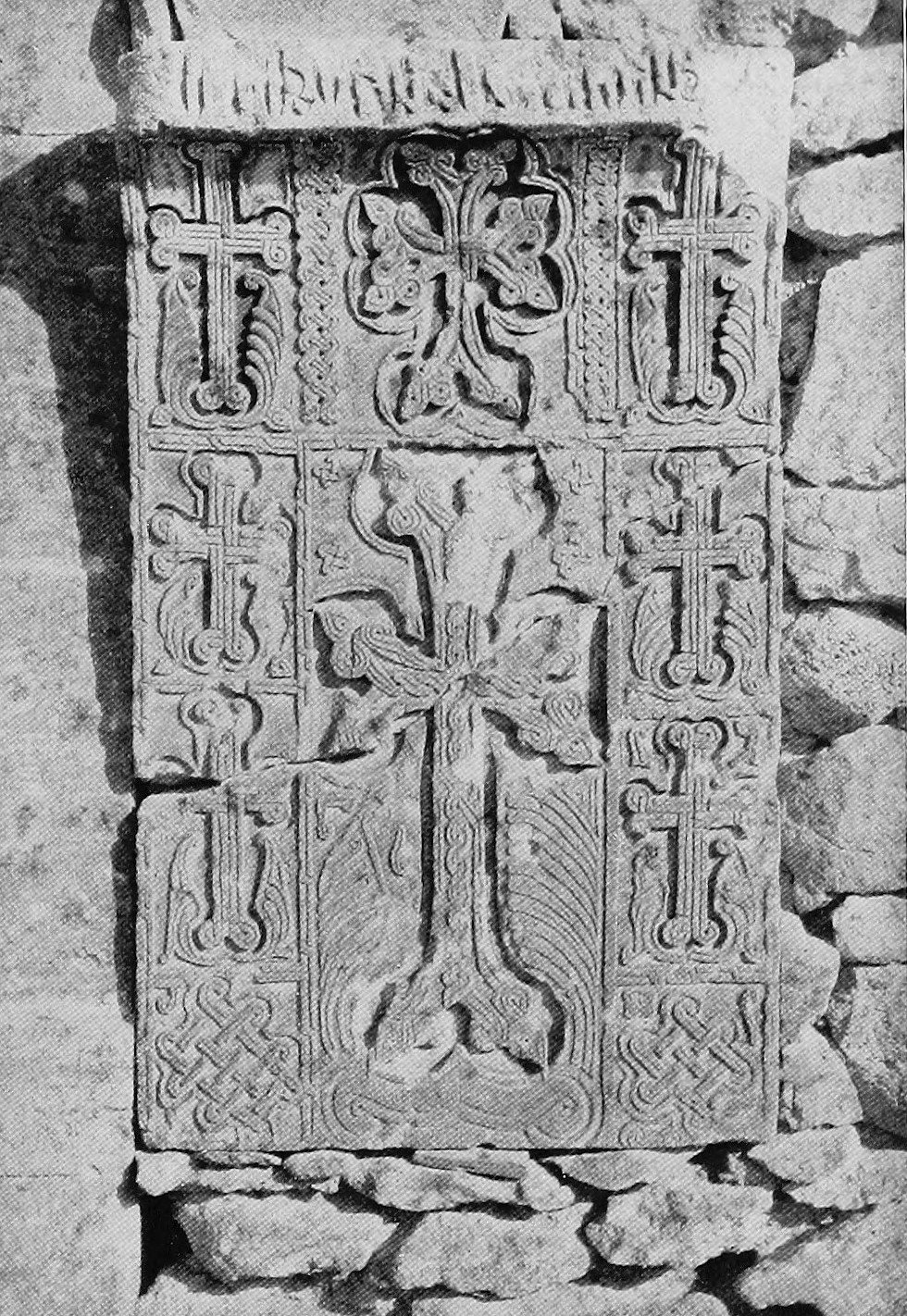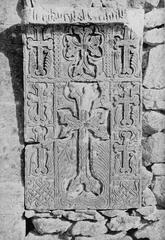
Khachkar Monument Buenos Aires: Visiting Hours, Tickets, and Historical Sites Guide
Date: 14/06/2025
Introduction
Set in the heart of Buenos Aires’ Palermo district, the Khachkar Monument stands as a striking tribute to Armenian heritage, faith, and resilience. This intricately carved Armenian cross-stone, or khachkar, not only honors the victims of the Armenian Genocide but also celebrates the enduring spirit of the Armenian diaspora within Argentina’s multicultural tapestry. This comprehensive guide offers essential details about the monument’s history, cultural significance, visiting hours, ticketing information, accessibility, nearby attractions, and practical tips to enrich your experience. Whether you are drawn by history, artistry, or cultural exploration, the Khachkar Monument offers a profound narrative of survival and identity (UNESCO; Buenos Aires Ciudad).
Table of Contents
- Introduction
- History and Origins of the Khachkar
- Symbolism and Artistic Features
- Armenian Migration and the Diaspora in Argentina
- The Khachkar Monument in Buenos Aires
- Visitor Information and Practical Tips
- Educational and Intercultural Impact
- Frequently Asked Questions (FAQ)
- Plan Your Visit and Stay Connected
- Conclusion
- References and Further Reading
History and Origins of the Khachkar
Khachkars, or Armenian cross-stones, emerged in 9th-century Armenia as a unique form of Christian art and memorialization. The term “khachkar” combines the Armenian words for “cross” (khach) and “stone” (kar), reflecting their primary function as carved stone steles bearing a cross motif surrounded by intricate botanical, geometric, and symbolic designs. Khachkars served as spiritual guardians, memorials, and markers of significant events, and their elaborate craftsmanship became a hallmark of Armenian culture (UNESCO; Smithsonian Magazine).
The creation of khachkars peaked between the 12th and 14th centuries, coinciding with periods of religious fervor and political upheaval. Each khachkar is unique, with artisans rarely repeating designs, and the process of carving is regarded as a sacred act (allinnet.info). The art of khachkar-making is so fundamental to Armenian identity that UNESCO recognized it as Intangible Cultural Heritage in 2010.
Symbolism and Artistic Features
The khachkar’s central cross motif symbolizes Christ’s sacrifice and the Armenian Christian faith. Surrounding the cross are detailed carvings of rosettes, grapevines, leaves, sunbursts, interlaced patterns, and sometimes the Tree of Life. These elements each hold symbolic meaning:
- The Cross: Centerpiece of faith and redemption.
- Botanical Motifs: Eternal life, fertility, and the promise of resurrection.
- Rosettes/Sunbursts: Divine light and the cosmos.
- Interlacing Patterns: Unity, continuity, and protection.
Inscriptions in classical Armenian often include the names of the deceased or donor, invocations for peace, and dedications. Khachkars were traditionally placed near churches, cemeteries, and monasteries, reinforcing their role as spiritual guardians (araratour.com; levontravel.am).
Armenian Migration and the Diaspora in Argentina
The Armenian presence in Argentina dates to the late 19th and early 20th centuries, intensifying after the Armenian Genocide (1915–1923) when survivors sought refuge abroad. Argentina’s open immigration policies and multicultural ethos attracted thousands of Armenians, leading to the establishment of one of Latin America’s largest Armenian communities, concentrated primarily in Buenos Aires (Academia.edu; Allinnet.info).
Armenians contributed significantly to Argentine society, founding churches, schools, clubs, and cultural centers—especially in the Palermo district, which features “Armenia Street” as a community hub.
The Khachkar Monument in Buenos Aires
Location and Community Context
The Khachkar Monument is located in Plaza Inmigrantes de Armenia, Palermo Soho, a vibrant neighborhood known for its cultural diversity, trendy shops, cafes, and green spaces (audiala.com). The plaza is easily accessible by public transportation, taxi, or on foot.
Historical and Cultural Importance
Installed in 1998 to mark the 83rd anniversary of the Armenian Genocide, the Buenos Aires khachkar was crafted in Armenia and transported to Argentina, symbolizing the unbroken link between homeland and diaspora (Buenos Aires Ciudad). The monument serves as a focal point for Armenian Genocide Remembrance Day (April 24th) and other cultural events, while also educating the broader public about Armenian heritage.
Visiting Hours and Accessibility
- Plaza Hours: Open 24 hours a day, seven days a week, allowing visitors anytime access (audiala.com).
- Admission: Free to all visitors.
- Accessibility: The plaza and monument are wheelchair accessible, with paved paths and ramps.
Tickets and Guided Tours
- Tickets: No tickets are required; entry is always free.
- Guided Tours: Available through local cultural centers and some Palermo Soho walking tours. For deeper insight, consider booking in advance, especially around Armenian commemorative events.
Special Events and Commemorations
- April 24th: Annual Armenian Genocide Remembrance Day, featuring ceremonies, music, and community gatherings.
- Other Events: Cultural festivals, workshops, and educational activities organized by Armenian associations throughout the year.
Visitor Information and Practical Tips
How to Get There
- Public Transportation: Buenos Aires Subte Line D (Scalabrini Ortiz or Plaza Italia stations) and multiple bus lines along Avenida Scalabrini Ortiz and Armenia Street.
- Taxi/Ride-share: Readily available throughout Palermo Soho.
Best Times to Visit
- Spring (Oct–Nov) & Autumn (Mar–Apr): Temperate weather (18–25°C) and blooming Jacaranda trees create a beautiful setting (secretsofbuenosaires.com).
- Summer (Dec–Feb): Hot and humid; bring sun protection.
- Winter (Jun–Aug): Mild, occasionally rainy.
Plan your visit for mornings or late afternoons for fewer crowds and optimal lighting.
Nearby Attractions and Amenities
- Cafes and Restaurants: Palermo Soho offers a wide range of dining options, including Armenian bakeries and restaurants (wanderlustphotosblog.com).
- Boutique Shopping & Street Art: Explore local shops, artisan markets, and vibrant murals.
- Other Green Spaces: Plaza Serrano, Botanical Garden.
- Restrooms: Not available in the plaza; use nearby establishments.
Accessibility and Safety
- Wheelchair Access: Paved paths and ramps throughout the plaza.
- Safety: Palermo Soho is generally safe; keep valuables secure and use official taxis or ride-share apps at night (womens.travel).
- Language: Spanish is predominant, but basic English is spoken in many local establishments.
Cultural Etiquette
- Respectful Conduct: Maintain quiet reflection around the monument, especially during ceremonies.
- Photography: Permitted, but avoid climbing or touching the monument.
Educational and Intercultural Impact
The Khachkar Monument not only honors Armenian heritage but also serves as an educational resource and a symbol of intercultural dialogue. Schools and universities organize visits, and informational plaques and guided tours provide context on Armenian history, migration, and resilience. Its presence in Buenos Aires highlights the contributions of immigrant communities to the city’s rich cultural fabric (araratour.com).
Frequently Asked Questions (FAQ)
Q: What are the visiting hours?
A: The plaza and monument are open 24/7.
Q: Is there an entrance fee or ticket required?
A: No, entry is free.
Q: Is the site wheelchair accessible?
A: Yes, with paved paths and ramps.
Q: Are guided tours available?
A: Yes, through local cultural centers and some walking tours.
Q: Can I take photographs?
A: Yes, but please do not climb or touch the monument.
Q: When is the best time to visit?
A: Spring and autumn for pleasant weather and beautiful surroundings.
Plan Your Visit and Stay Connected
For real-time updates and travel tips, download the Audiala app. Follow official Buenos Aires tourism channels and Armenian community pages for event schedules and news (Buenos Aires Official Tourism).
Emergency Contacts:
- Police/Emergency: Dial 911
- Tourist Police (English-speaking): +54 11 4346-5748
- Medical Emergency: Dial 107
Conclusion
The Khachkar Monument in Buenos Aires is more than a work of Armenian stone artistry—it is a living testament to the resilience, faith, and cultural legacy of the Armenian people in Argentina. Open year-round with free public access, it provides a unique opportunity for reflection, education, and intercultural understanding in one of the city’s most dynamic neighborhoods. Whether you attend annual commemorations or simply appreciate its intricate craftsmanship, the monument invites all visitors to connect with a rich narrative of survival and hope. Explore Palermo Soho, engage with the local Armenian community, and discover the universal messages of remembrance and peace that the Khachkar embodies.
Additional Resources
- Audiala: Plaza Inmigrantes de Armenia
- UNESCO Intangible Cultural Heritage: Khachkars
- Buenos Aires Official Tourism
- Araratour Armenian Cross-Stones
- Levon Travel History of Armenian Khachkars
- Exploring Armenia Street in Buenos Aires: A Tale of Cultural Resilience
- Smithsonian Magazine: Armenia’s Stone Crosses
- Wanderlustphotosblog: Your Ultimate Buenos Aires Tourist Guide
- Womens.travel: 18 Important Things to Know Before Visiting Buenos Aires






























































































































































